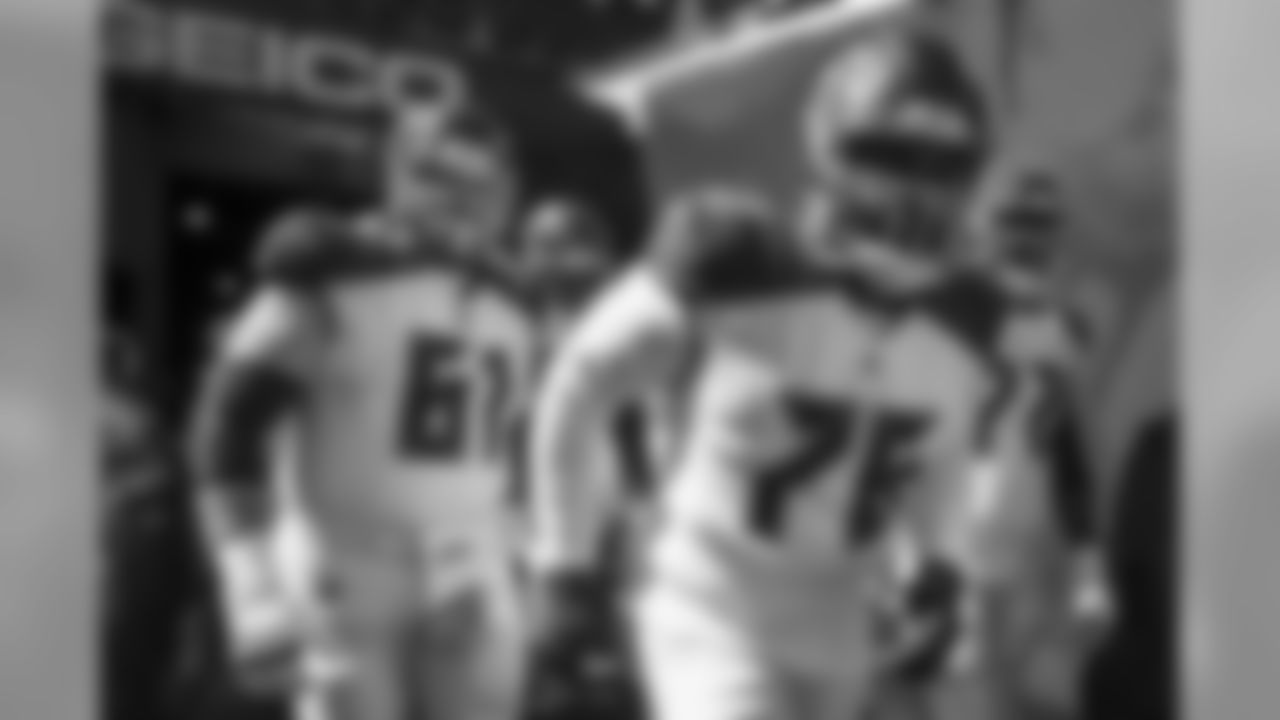The Tampa Bay Buccaneers' 26-23 win over Cleveland on Sunday marked their first victory in overtime since 2015 and their first since the league shortened the extra period from 15 minutes to 10. That made things a little tight at the end, as Chandler Catanzaro's 59-yard field goal came with less than two minutes remaining. By choosing to try the kick, Head Coach Dirk Koetter played for the win rather than the tie, risking a more likely loss in the process if Catanzaro missed. The strategy was aggressive, and successful.
Had the Buccaneers punted and held, or had Catanzaro missed and the Browns failed to take advantage of the remaining time, Tampa Bay would have had its first tie in 38 years. The only other Buccaneer game – out of 666 regular-season games in total – to end in a tie was a 14-14 non-decision with the Green Bay Packers in 1980.
The only franchises out of the 32 currently in the NFL to have fewer tie games – none, that is – are the Houston Texans and Jacksonville Jaguars. The Texans began play in 2002, the Jaguars in 1995. The Buccaneers have been in the league since 1976. Baltimore, Carolina and Seattle all have one tie each; Carolina began play in 1995, Baltimore in 1997 while the Seahawks were the Bucs' sister expansion team in '76.
One thing is for sure: The Buccaneers are glad their number of ties is still one! Now on to your questions.
A reminder that you can send questions to me anytime you want on Twitter (@ScottSBucs) and they're easier to find if you include the hashtag #SSMailbagBucs. As you'll see from time to time, I also unilaterally appropriate for myself – as any good pirate captain would – questions I like that are meant for our Insider Live show or are simply responses to one of my previous tweets. I've also taken to stealing emails meant for our Salty Dogs podcast. As always, if you specifically want to get a question into the mailbag and would prefer to email your question, you can do so to tbbsocial@buccaneers.nfl.com.
The last time a Buccaneers team started 3-3 and made the playoffs, Max, was 2001. That was the end of a four-year stretch where Tampa Bay repeatedly got off to that start and then mostly did better from there. But you don't think I'm just going to give you the simple answer and leave it at that, do you? That's not really my style. Let's talk about every time the Buccaneers have started a season with a 3-3 record.
The Bucs have been exactly .500 after their first six games 11 times, first in 1978 and most recently in 2016. I'll list them all below, along with the final records for each team and whether they made the playoffs, and you're going to see a couple very clean divisions in the list.

As we all know, the Buccaneers had a rough start in an era that was particularly unkind to expansion teams, beginning in 1976, then made an impressive rise to playoff status by 1979. They were contenders for four years, and then beginning in 1983 there was a long run of futility that didn't end until the team was sold to Malcolm Glazer and Tony Dungy arrived as the head coach. That was 1995 and 1996, respectively, and in 1997 the Bucs began their longest run of (nearly) uninterrupted playoff contention.
So apply that to the list above. The Buccaneers occasionally got off to reasonably good starts between the last playoff season of 1982 and the Glazer era, but they were misleading and all of those 3-3 teams collapsed. The first 3-3 start under Dungy came in 1998, and as noted above, began a run of four straight. Those teams were legitimately good and they all improved after a slow start; only the 1998 team never fully got back on its feet, though it was not eliminated from the playoff hunt until several hours after it had won its regular season finale.
The 2003 season was one of the craziest and least fulfilling in franchise history. The Buccaneers were defending champs and they demolished a very good Philadelphia team to win their '03 opener. In the team's locker room, players believed they were actually better than the year before. Then the craziness began – blocked extra points at the end of regulation, insane Peyton Manning comebacks on Monday night, key injuries coming in bunches, receivers being sent home, general managers leaving in-season, etc. The Bucs were still good enough in 2003 to win almost half their games, but they couldn't overcome all their (mostly) self-inflicted wounds.
And then there wasn't another 3-3 start until two years ago, Dirk Koetter's first season as head coach. That team started off with a rousing win in Atlanta then lost three straight. Three-and-three turned into 3-5, and then the Bucs reeled off a five-game winning streak to get back into the thick of the playoff race. The 2016 Bucs finished 9-7 and built high expectations for the 2017 season, expectations that cratered under too many losses in close games.
So, Max, which type of team do you think the Bucs have this year? A 3-3 team like they had several times in the '80s that wasn't as good as that record would suggest? Or a 3-3 team like in the Super Bowl era that just hadn't put it all together yet. It's impossible to know for sure at this point, but my opinion based on the last three seasons as a whole is that the Bucs are more like the latter, if admittedly having to deal with some decently-sized flaws.
That makes your second question more relevant, Max. How does 3-3 fit into the current NFC playoff picture? Well, if the season ended today…there'd be a lot of very angry network executives. Also, the Bucs would be juuuuust outside the postseason looking in. Your current division leaders are Washington (4-2), Minnesota (4-2-1), New Orleans (5-1) and the L.A. Rams (7-0). The two Wild Card spots would currently belong to the 4-2 Carolina Panthers and the 3-2-1 Green Bay Packers. The Buccaneers, Lions, Bears and Seahawks would all be a half-game behind.
So that's four teams in the NFC, or exactly one-quarter of the conference, that currently sits at 3-3. And you know what? At least one of those teams is probably going to make it. Among the many very useful search tools on the Pro Football Reference website is one that allows you to input any win-loss record and find all the teams that had that record and where they finished at season's end. The data only goes back to 1990, but that still gives us almost three decades of evidence with which to work.
So, yes, I did that with a 3-3 record. There were 201 teams that started out that way from 1990 through 2017, including the Bucs on seven occasions. Seventy-one of those 201 teams, or 35.3% of them, went on to make the playoffs. It's true that only five of them made the Super Bowl and only two of them won it, but let's get back to the postseason first and then see what happens. (Those two Super Bowl-winning teams were the 2001 Patriots and the 2010 Packers.)
Last year, there were a whopping 11 teams across the NFL that started out 3-3. Three of those teams went on to the playoffs – Jacksonville, Atlanta and Tennessee.
The Jaguars and Titans (and Houston Texans) were tied for the AFC South lead after six weeks but in terms of the overall AFC standings were behind the three other division leaders and three teams that had 3-2 records in the Wild Card race – Buffalo, Miami and Denver. Jacksonville made the leap to 11-5, Tennessee got in with nine wins and Buffalo held on to make the playoffs, but Miami and Denver fell off.
In the NFC, the Falcons were 3-3 after seven weeks, a game out in the NFC South but in the Wild Card race behind 4-2 Seattle and a pair of 4-3 teams, Green Bay and Carolina. Atlanta eventually surpassed Seattle and Green Bay to join Carolina in the playoffs.
It's a similar story in most seasons. There are always going to be more 3-3 teams that don't make the playoffs, simply because there isn't enough room for all of them to do so. But it's very likely that some of this year's 3-3 teams will make it to the postseason. If you find that encouraging regarding the Buccaneers' chances, then my mission is accomplished.
Well, I think some of those statistics at least tell part of the story. A high number of interceptions and passes defensed indicate a player who is affecting opposing passers, and the fact that the Bucs' defensive backs haven't racked up many in either category is a reflection of the team's deep problems in coverage the first five games.
The Bucs had four passes defensed against Cleveland's Baker Mayfield on Sunday and according to Head Coach Dirk Koetter generally played much tighter coverage than they had in the previous games. Cornerbacks Carlton Davis and Brent Grimes had one each, and both came on third-down plays and were thus drive-killers. The one by Davis ended the Browns' first drive in overtime, eliminating the possibility that the Browns would win the game on a touchdown and keep the Bucs from getting a possession. In today's NFL, with such an enormous inflation of offensive numbers across the league, it's often not realistic to expect a defense to completely shut down an opposing passing attack; in such cases, you need plays like the ones by Davis and Grimes, made at critical moments, to kill enough drives to win.
Of course, when a corner gets good enough, opposing quarterbacks sometimes shy away from his side, which greatly diminishes the opportunity for interceptions and passes defensed. Call that the Darrelle Revis effect. At his peak, Revis was so good that he got consideration for Defensive Player of the Year, which is rarely won by cornerbacks. In 11 seasons he had 29 interceptions, which seems relatively modest for a playmaker of his caliber; after he got 13 in his first three seasons, QBs stopped visiting Revis Island and he had between zero and two picks in six of his last eight years.
It is possible to measure these things, and there are stat services and self-proclaimed scouting and grading outlets that do just that. They review tape of every game and every play and chart things such as how often a receiver being covered by a specific cornerback is targeted. Keep a high percentage of those targets from becoming completions and you are graded highly. Of course, you have to dig for these types of numbers, and that's more than most casual fans are interested in doing, for good reason.
As for the Buccaneers, I don't think the statistics are particularly misleading at all. Until the last game, Tampa Bay's defense had been giving up copious amounts of passing yards and touchdown passes, and those numbers accurately reflected how well the individual players were performing. I don't think anybody looks at tackle statistics for a cornerback and considers them any sort of indication of how well they are playing. Yes, cornerbacks sometimes get tackles in run support, but they more often get them taking down a player who has caught a pass near them. Sometimes those are good plays, reacting quickly to a short pass and getting the player on the ground for a small gain; sometimes they are just the end of a negative play, like a 25-yard completion.
View exclusive, behind-the-scenes photos of the Buccaneers Week 7 matchup against the Cleveland Browns from Team Photographer Kyle Zedaker.




































































This tweet from Luis is obviously a reaction to the losses of Kwon Alexander and Jack Cichy to injured reserve and the additions and revisions the Buccaneers are making to their linebacking corps as a necessary result. And it's understandable that Beckwith's name would come up, as he would be the perfect substitute for Alexander in the middle right now. As a rookie, Beckwith started the season at strongside linebacker and then took over in the middle after Alexander suffered an injury that kept him out for most of five games. Beckwith played well and was expected to be a big part of the defense again in 2018.
Unfortunately, an auto accident in which he was a passenger led to a serious ankle injury in April, requiring surgery. Beckwith has not yet returned to the field as he has worked to get that ankle back to full strength. When he was not ready to go at the start of training camp, the Buccaneers put him on the active/non-football-injury list (NFI). When he was still not ready for the start of the regular season, he was shifted to the reserve/NFI list. That meant he had to miss at least the first six weeks of the season.
And that's where we are right now with Beckwith. He was first eligible to begin practicing last week, though that did not happen. The Buccaneers are in the middle of a 21-day window in which they can bring the second-year 'backer back out to practice without him counting against the 53-man roster. At the end of that window, the Buccaneers will have to choose whether to activate him to the roster or have him remain out for the rest of this season.
Beckwith spoke about his progress in the locker room last week. Without noting any specific timetable, he said his comeback efforts were nearing a conclusion.
"It's going real good, just got to keep progressing, keep going uphill, man," said Beckwith. "It's definitely been a battle but the battle is almost over now. When I'm 100% confident in it, that's when [I'll return]. Sooner than you think. I'm not sure; we'll see."




































